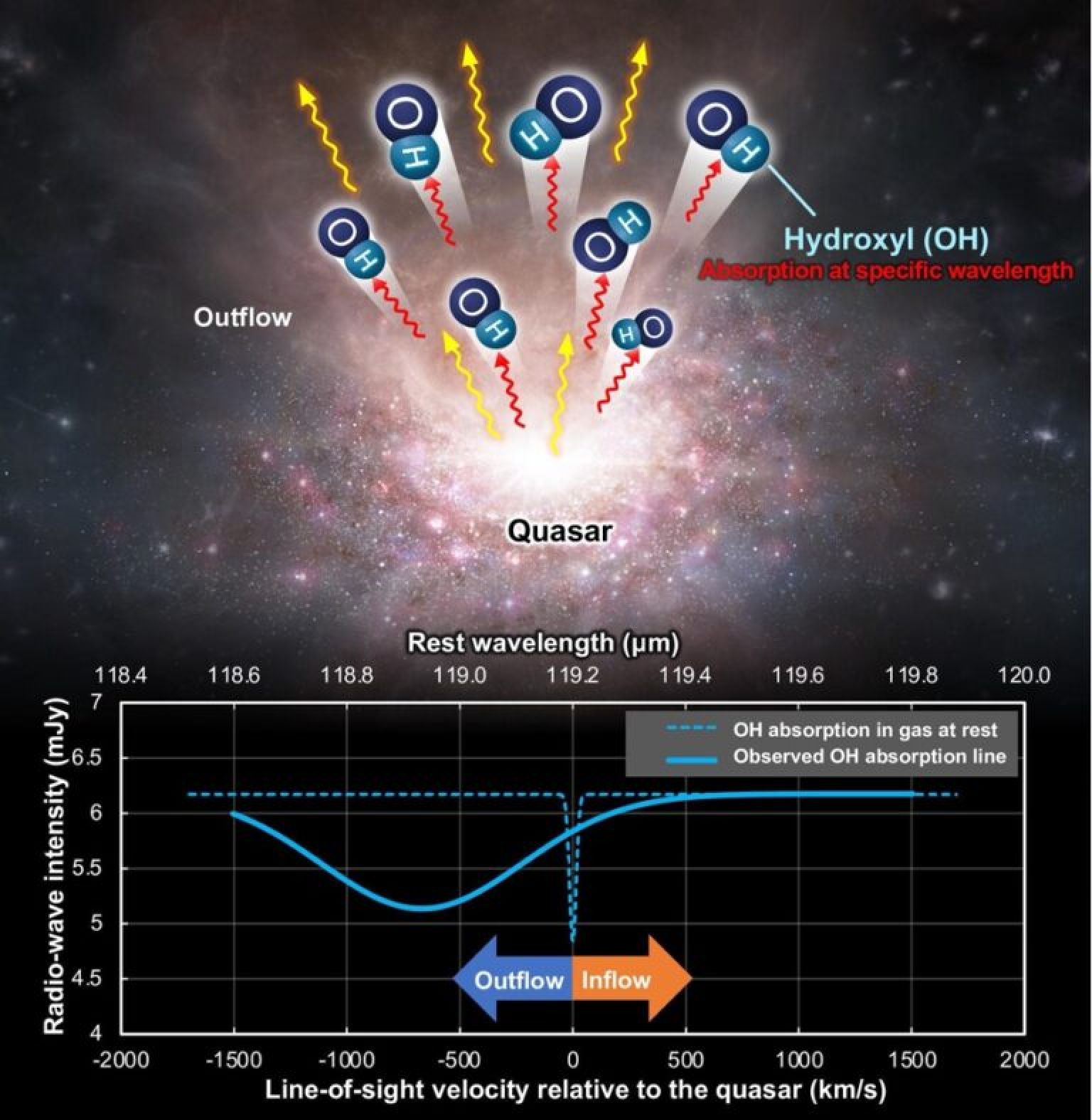This Enormous Black Hole Prevents Stars From Forming
Follow us on Google News (click on ☆)

Molecular gas, mainly composed of oxygen bound to hydrogen, constitutes the essential fuel for star formation. However, quasars, by ejecting this gas at such a speed that it cannot be assimilated by nascent stars, inhibit this stellar formation. The discovery, published on February 1st in the Astrophysical Journal, sheds new light on the critical role that molecular gas ejections play in the formation and evolution of galaxies from their earliest phases.
Quasars are the active cores of distant galaxies, housing a supermassive black hole at their center which, by absorbing matter and energy, becomes an extremely bright light source. Although this process has been observed in the nearby Universe, it had never been confirmed so early in cosmic history, roughly one billion years after the Big Bang.
To reach this conclusion, researchers used the Atacama Large Millimeter/submillimeter Array (ALMA), a radio wave-detecting telescope, to study the quasar J2054-0005. They discovered that the molecular gas was detected in absorption, meaning that the gas did not emit directly observable radiation, but rather absorbed part of the radiation emitted by the quasar, acting like a "shadow" in front of this bright source.
This method of indirect detection not only confirmed the presence of gas ejections by the quasar but also paves the way for future research. Astronomers hope to find other quasars in the early Universe to better understand how the luminous cores of giant black holes have shaped the first galaxies. This study marks a turning point in our understanding of the impact of supermassive black holes on the galactic environment at the dawn of the Universe.